Beauty is probably the last thing that comes to mind when we think of factories and plants. More often than not those are shed-like volumes aspiring to ultimate utility. However, industrial architecture has changed dramatically over last decades, studios developing bespoke structures that are not limited basic buildings plants used to be in the past. Plants and factories of today blur the distinction between the harshness of industry and a more polished allure of contemporary corporate and public spaces.
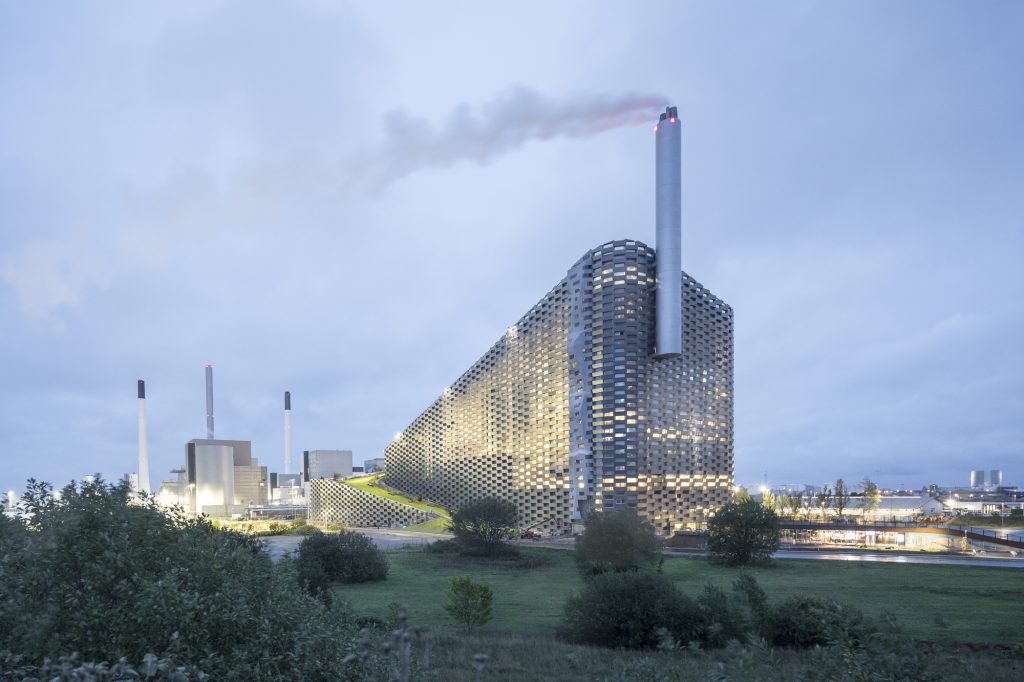
Probably one of the most talked about projects of this year is Copenhill, a transformed power plant in Copenhagen, Denmark designed by Bjarke Ingels Group. The project combines a modern waste-to-energy plant with a hub of the social life of the city, featuring an environmental education and urban recreation center with a ski slope, a tree-lined hiking trail, and the ‘tallest artificial climbing wall in the world’ on its facade.
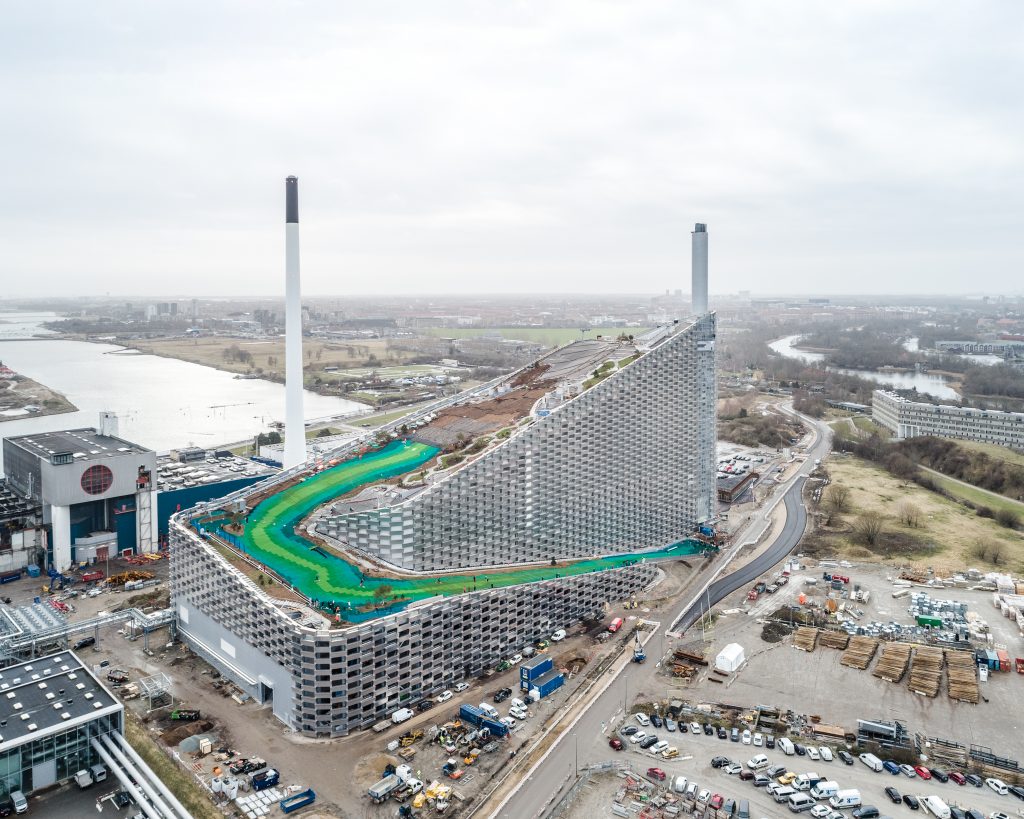
Copenhill by Bjarke Ingels Group (also header image)
The social infrastructure of Copenhill demonstrates what otherwise would remain hidden. Filled with the latest technologies in waste treatment and energy production, it is probably the cleanest waste plant, an example of ‘hedonistic sustainability’, as Bjarke Ingels puts it.
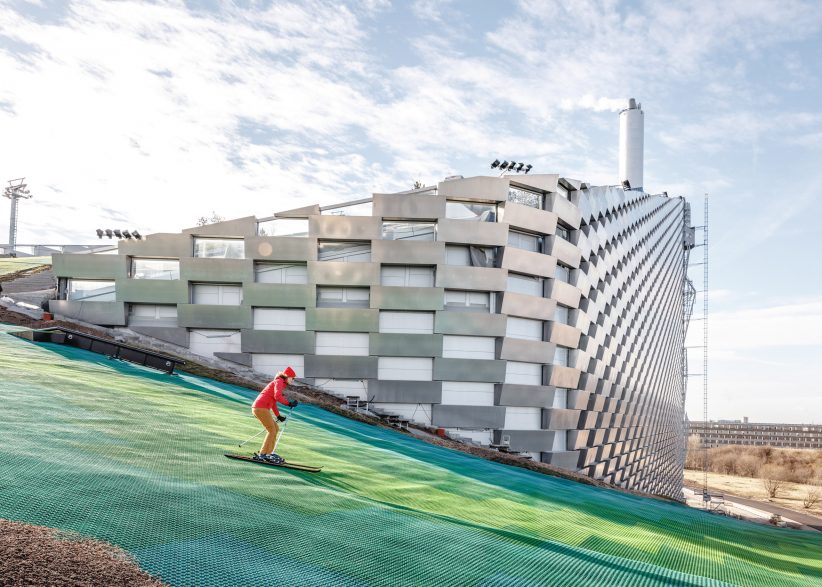
Copenhill by Bjarke Ingels Group
Designwise, Copenhill is distinguished by its wedge-shaped form, a blocky facade composed of aluminium bricks and a sloped green roof helping create a biodiverse landscape that simultaneously absorbs heat, remove air particulates, and minimize stormwater runoff.
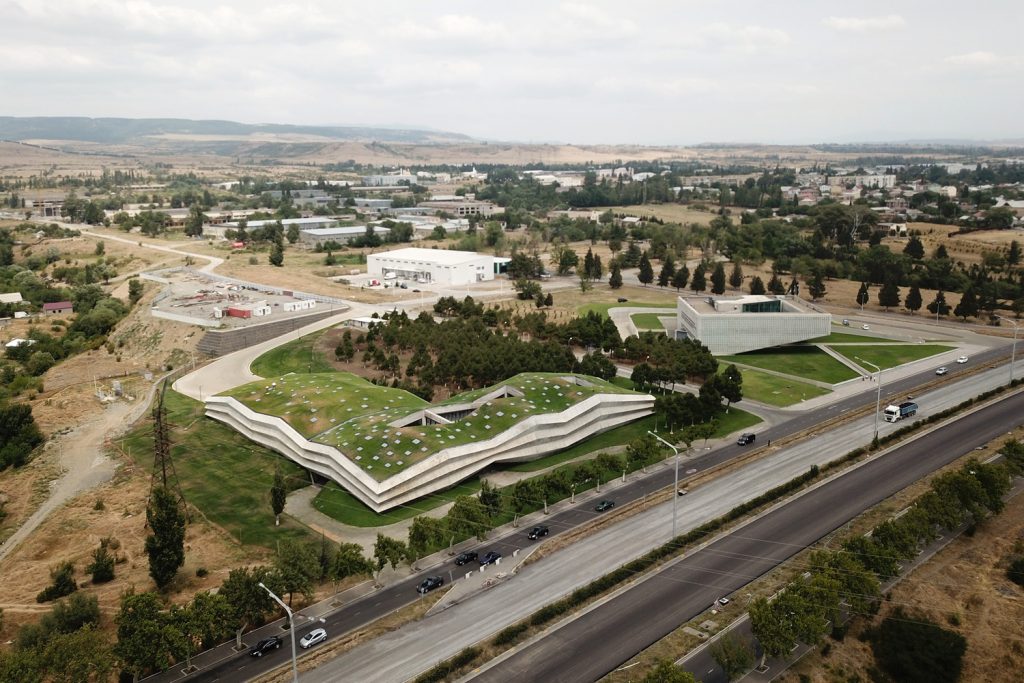
Coffee production plant by Khmaladze Architects
Tbilisi, Giorgia based Giorgi Khmaladze Architects designed a building that comprises a coffee production plant, its offices, coffee tasting and small coffee exhibits. Located on a highway connecting city to the airport and surrounded with fields and pine trees, it blends into surroundings thanks to its vast green roof intended to grow vegetation, where occasional openings in forms of atriums, terraces and skylights bring natural light indoors.
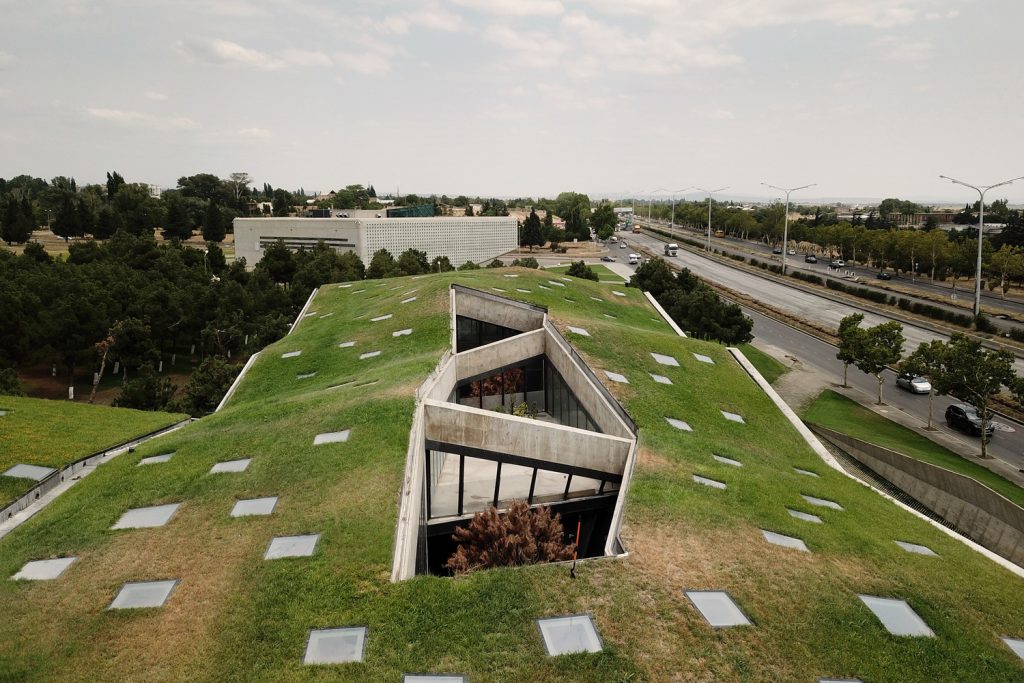
Coffee production plant by Khmaladze Architects
Given the location, the city required a building that would escape the regular factory appearance. From the highway, the building is a homogeneous all-concrete façade without any visible openings, folded to produce double curved geometry. Its appearance changes during the day, following the sun movement through an interplay of light and shadow.
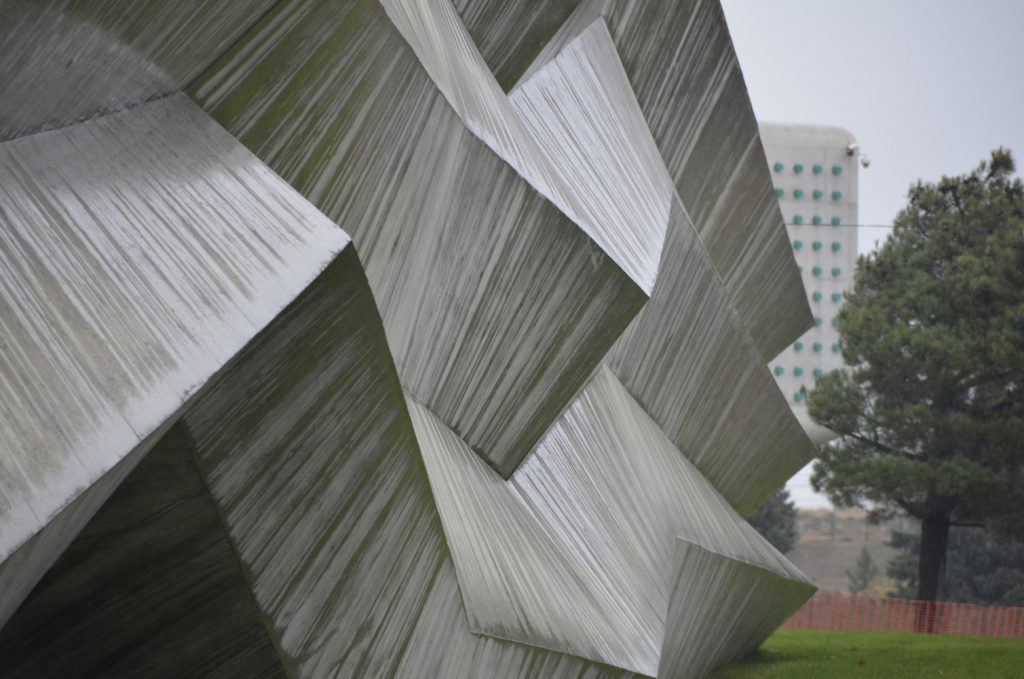
Coffee production plant by Khmaladze Architects
Inside, all programmes are arranged in a continuous space, with glass partitions as boundaries in between and the building’s volume adjusting its height to the programme components.
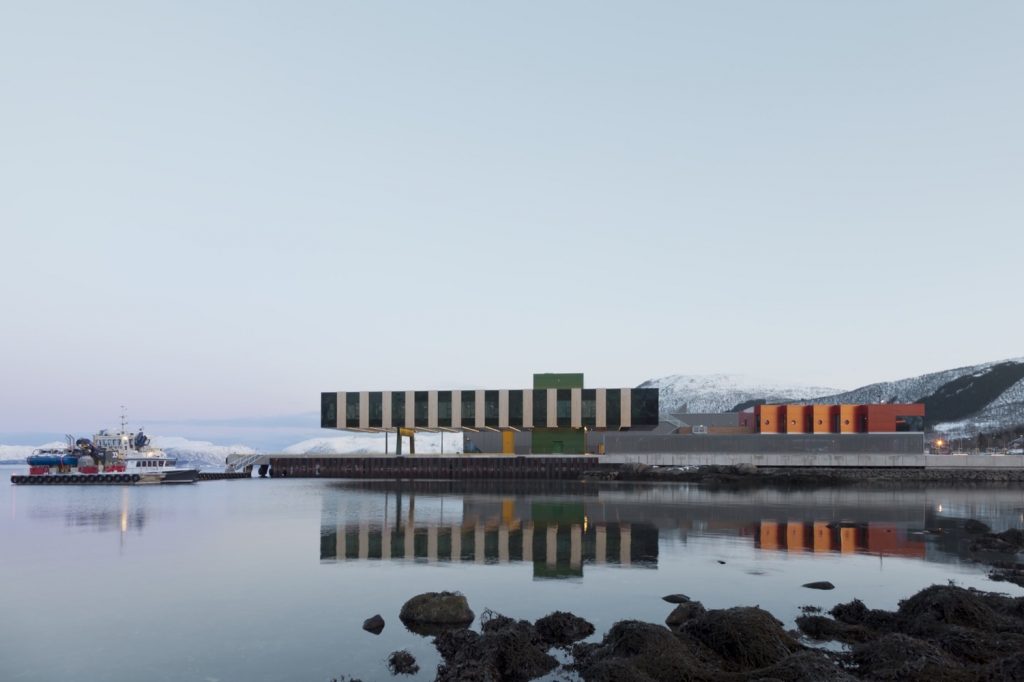
Holmen Industrial Area by Snøhetta
Norwegian practice Snøhetta has designed Holmen Industrial Area, a highly sophisticated and colorful 6,000sqm fishing facility in Northern Norway for shipowner Holmøy Maritime. This bold new facility merges Holmøy Maritime’s trawling, fish farming, and fish processing business and the company’s headquarters into four, distinctive buildings which are all organized and dimensioned to facilitate for activities at sea and on the mainland while respecting the surrounding pristine Norwegian landscape.
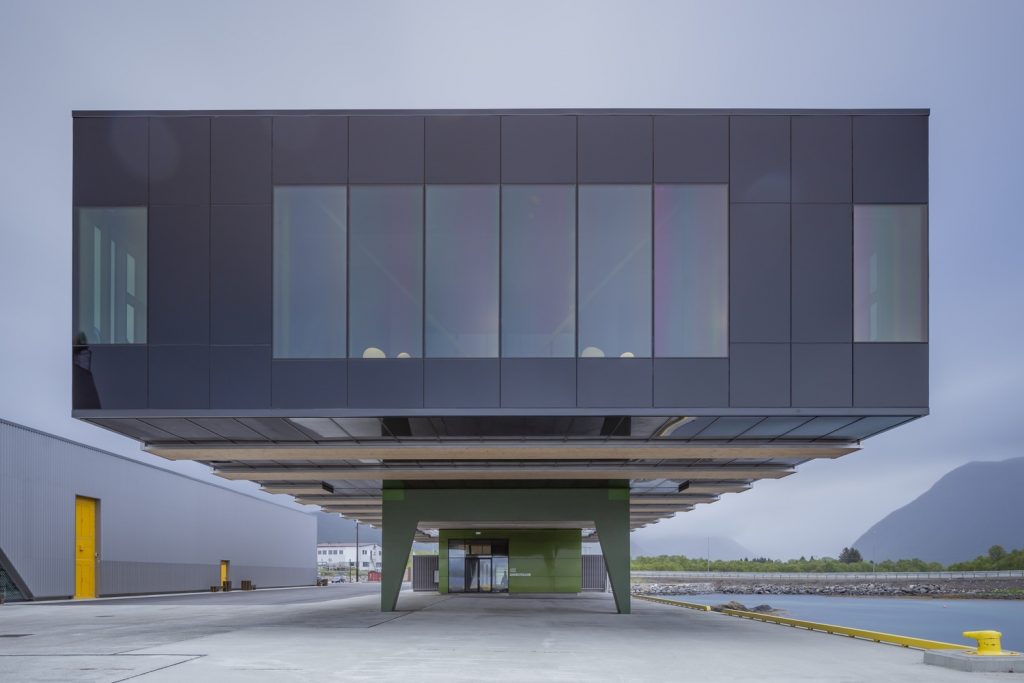
Holmen Industrial Area by Snøhetta
Snøhetta has conducted an extensive mapping of the complex logistics to create the industrial area which is organized in a simple rectangular shape, yet logistically complex to ensure in- and outgoing traffic from boats and trucks that shuttle between the facility, the sea and the mainland. The buildings feature large windows to allow maximum of daylight in. Such design reduces the need for artificial lighting and heating, contributing to a better indoor climate and the building’s sustainability.
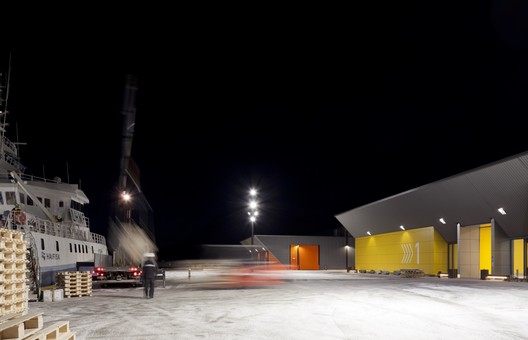
Holmen Industrial Area by Snøhetta
The choice of materials is highly functional, comprising aesthetic and durable finishes such as aluminium façade cladding and concrete floors. The bright colour pallete is inspired by the changing light conditions of the region, ranging from red, orange, yellow and green to create a contrast to the sky and the sea.
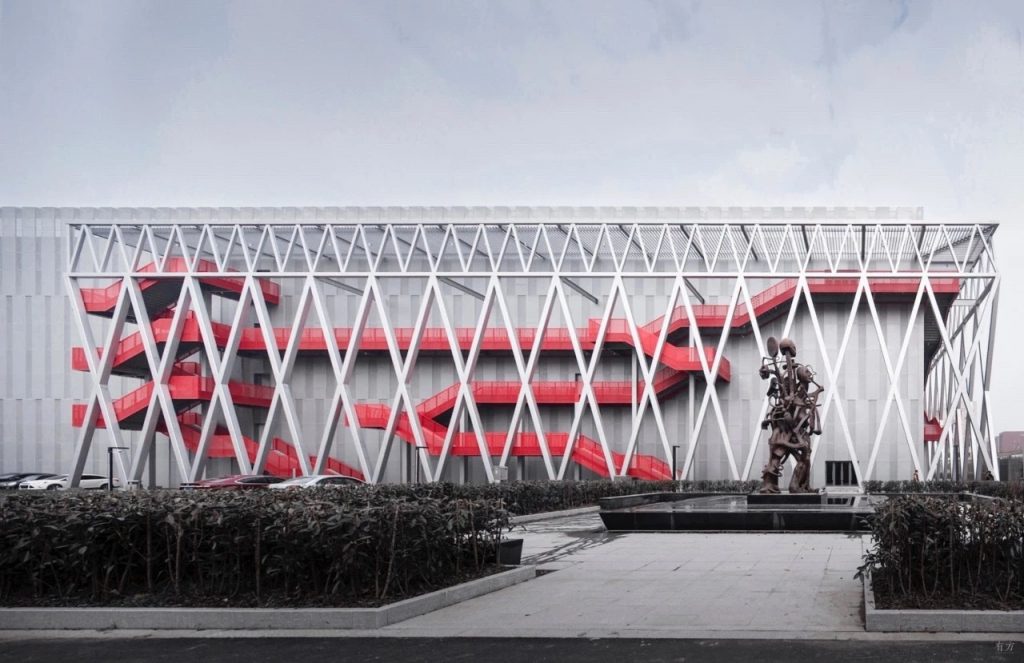
Future Stitch Smart Factory by AZL Architects
Chinese architecture practice AZL Architects developed the New Future Stitch Smart Factory for Stance, an American sports fashion brand. This modern factory of 26,800sqm in the economic development zone in Haining, Zhejiang Province is more than the only professional production base of Stance, it is a creative and artistic factory equipped with an architectural concept that matches the brand inspiration – The Uncommon Thread.
The factory encompasses a triple-height public art gallery as a distinctive brand element, abundant sport areas including basketball court that can also serve as the stage for the brand’s speakers or concerts, and a rooftop garden.
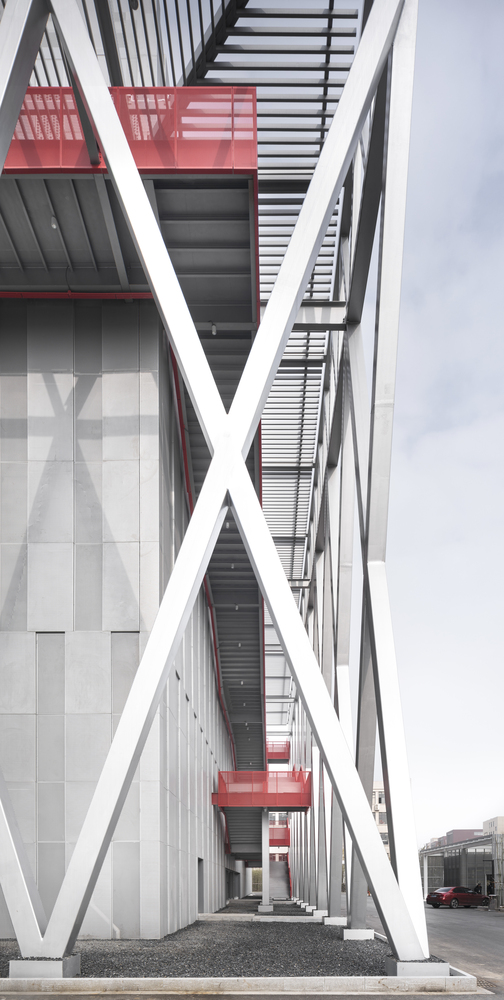
Future Stitch Smart Factory by AZL Architects
The east and south facades of the building feature the unique system of corridor circulations and outdoor stairs inspired by the Maiji Mountain Grottoes in Gansu, China started from 384-487 A.D. and the Centre Pompidou in Paris. The simple design of the red steel staircase and the flow of commuting workers on the corridors and stairs create a warm production atmosphere with a sense of ritual.